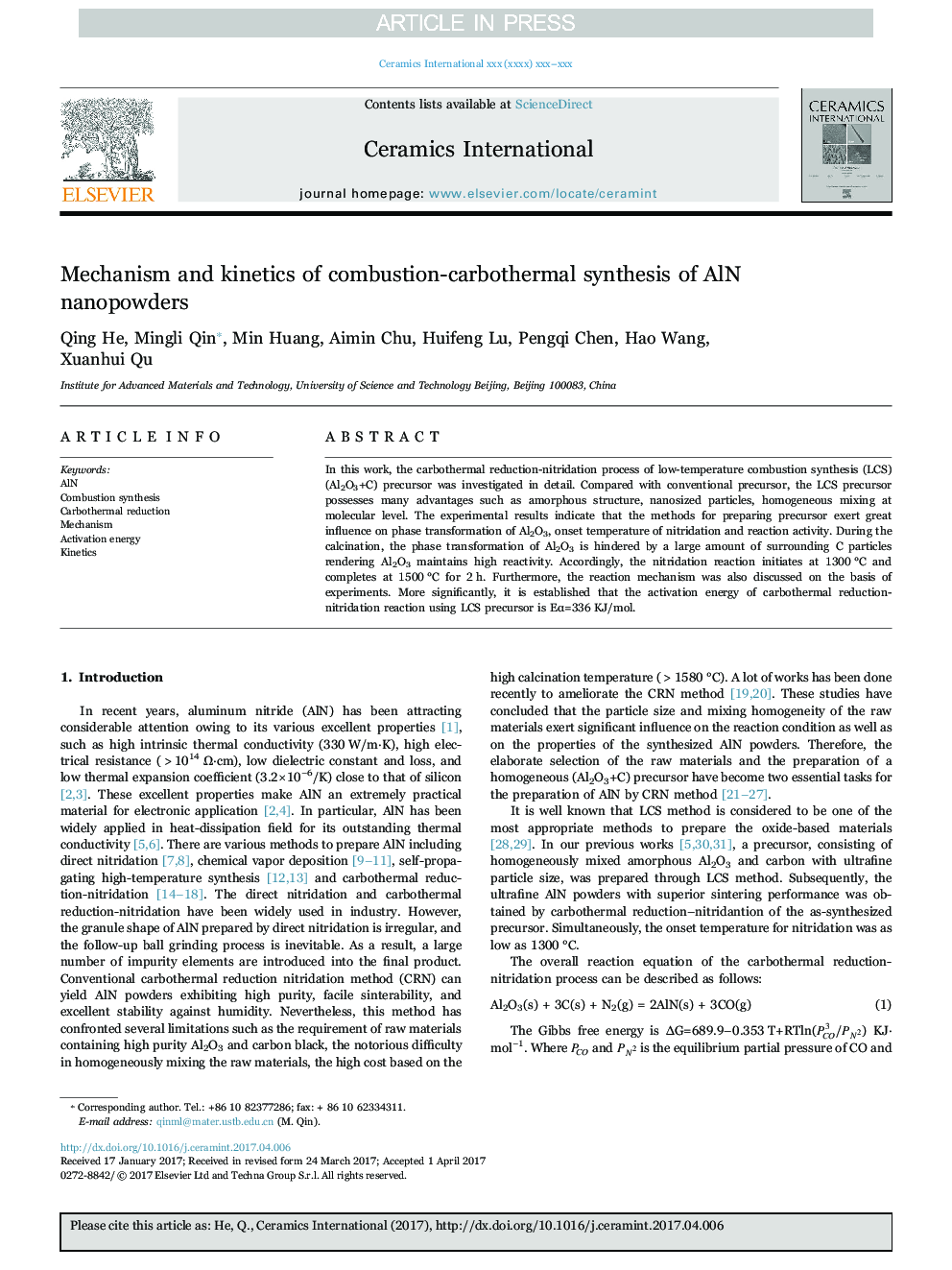| Article ID | Journal | Published Year | Pages | File Type |
|---|---|---|---|---|
| 5438335 | Ceramics International | 2017 | 8 Pages |
Abstract
In this work, the carbothermal reduction-nitridation process of low-temperature combustion synthesis (LCS) (Al2O3+C) precursor was investigated in detail. Compared with conventional precursor, the LCS precursor possesses many advantages such as amorphous structure, nanosized particles, homogeneous mixing at molecular level. The experimental results indicate that the methods for preparing precursor exert great influence on phase transformation of Al2O3, onset temperature of nitridation and reaction activity. During the calcination, the phase transformation of Al2O3 is hindered by a large amount of surrounding C particles rendering Al2O3 maintains high reactivity. Accordingly, the nitridation reaction initiates at 1300 °C and completes at 1500 °C for 2 h. Furthermore, the reaction mechanism was also discussed on the basis of experiments. More significantly, it is established that the activation energy of carbothermal reduction-nitridation reaction using LCS precursor is Eα=336 KJ/mol.
Related Topics
Physical Sciences and Engineering
Materials Science
Ceramics and Composites
Authors
Qing He, Mingli Qin, Min Huang, Aimin Chu, Huifeng Lu, Pengqi Chen, Hao Wang, Xuanhui Qu,
